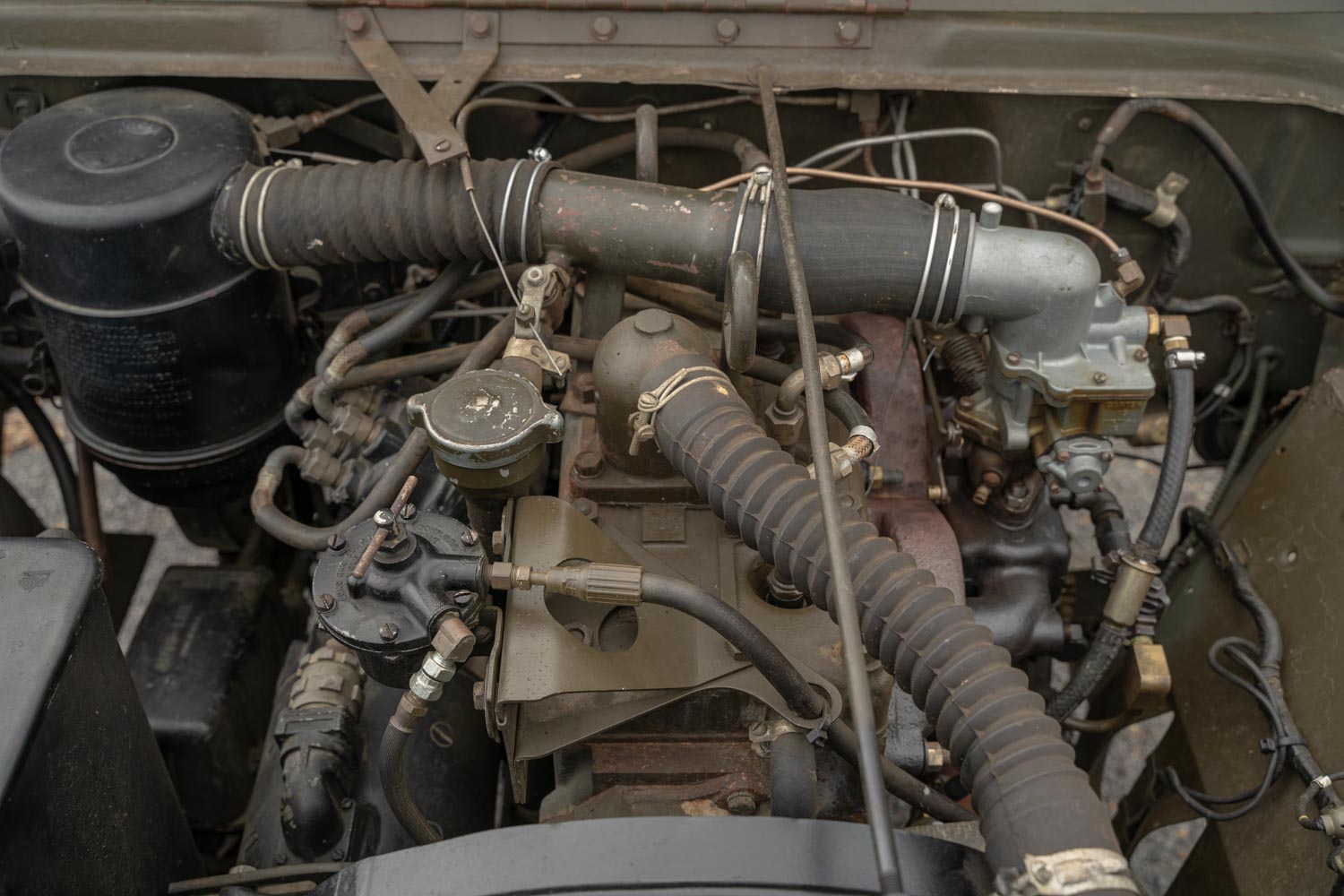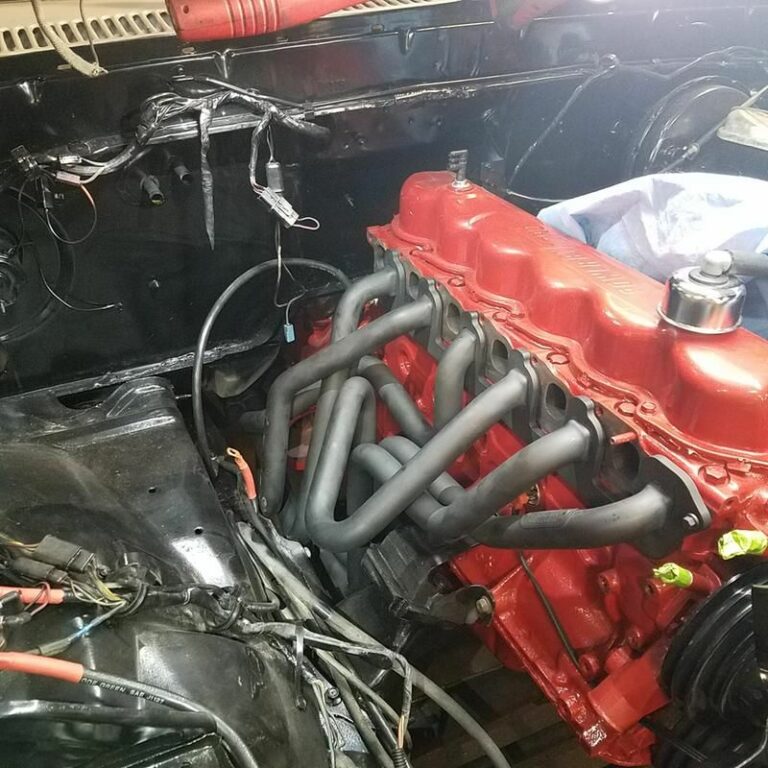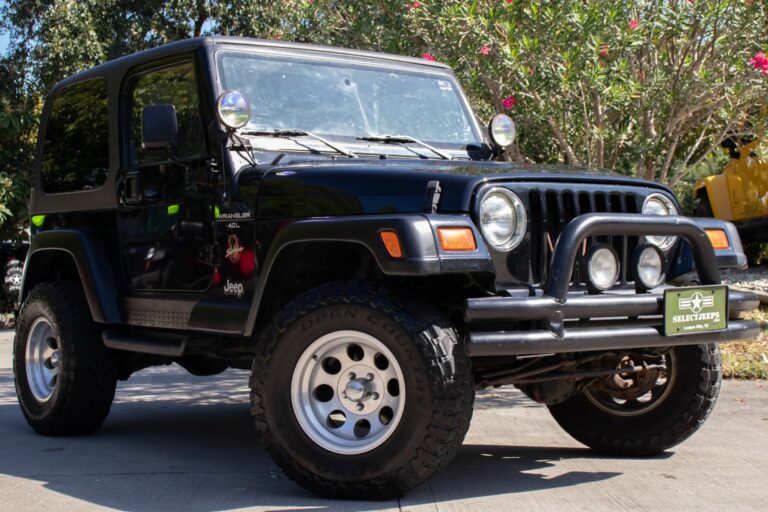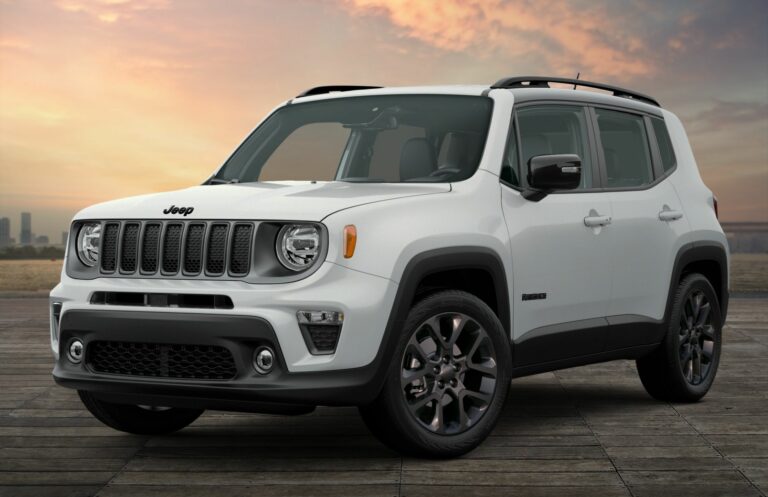1940-1950 Army Jeep For Sale: Your Comprehensive Guide to Owning a Piece of History
1940-1950 Army Jeep For Sale: Your Comprehensive Guide to Owning a Piece of History jeeps.truckstrend.com
The iconic Army Jeep, a vehicle synonymous with courage, resilience, and American ingenuity, holds a special place in automotive history. From the battlefields of World War II to the rugged terrains of the Korean War, these unassuming workhorses proved their mettle, becoming a legend in their own right. Today, the allure of a 1940-1950 Army Jeep For Sale transcends mere transportation; it’s an opportunity to own a tangible piece of global history, a testament to a bygone era of unparalleled engineering and design.
This comprehensive guide is designed for enthusiasts, collectors, and anyone dreaming of acquiring one of these legendary vehicles. We’ll delve into the models, the market, what to look for, and the realities of owning and restoring a vintage Army Jeep, providing you with all the insights needed to navigate your journey into classic military vehicle ownership.
1940-1950 Army Jeep For Sale: Your Comprehensive Guide to Owning a Piece of History
A Brief History: The Birth and Evolution of an Icon (1940-1950 Models)
The story of the Army Jeep begins in the crucible of World War II, driven by the urgent need for a lightweight, rugged, four-wheel-drive reconnaissance vehicle.
The Willys MB and Ford GPW (WWII Era: 1941-1945)
The most recognizable and widely produced models of this era are the Willys MB and its Ford-produced counterpart, the Ford GPW (Government Passenger Willys). Both were virtually identical, built to standardized specifications, featuring a flat-fendered body, exposed headlights, and powered by the robust "Go-Devil" L-134 inline-four engine. Their simplicity, durability, and go-anywhere capability made them indispensable on every front. Owning an MB or GPW means possessing a vehicle that directly contributed to the Allied victory, carrying soldiers, supplies, and hope through the toughest conditions imaginable.
The Willys M38 (Post-WWII / Korean War Era: 1949-1952)
Following WWII, Willys Overland continued to produce Jeeps for military use. The M38, officially the Willys MC, was an evolution of the MB. While outwardly similar, it incorporated significant upgrades for enhanced military performance. Key differences included:
- A 24-volt electrical system (compared to the MB/GPW’s 6-volt system) for better cold-weather starting and radio operation.
- Waterproof ignition and electrical components, allowing for deeper fording.
- A larger fuel tank.
- A hinged civilian-style windshield, often with a vent.
- Larger headlights.
- Reinforced chassis and body.


The M38 saw extensive service during the Korean War, showcasing the continued adaptability and necessity of the Jeep design in modern warfare. When you find a 1940-1950 Army Jeep For Sale, understanding these distinctions is crucial for identifying the specific model and its historical context.
Why Buy a Vintage Army Jeep? The Allure of History on Wheels
The decision to purchase a vintage Army Jeep is often driven by more than just a desire for a vehicle. It’s about passion, history, and a unique experience.
- A Tangible Piece of History: Owning a Jeep from this era means possessing a machine that witnessed pivotal moments in global history. Each dent, scratch, and patch tells a story of service and resilience.
- Unique Driving Experience: These vehicles offer a raw, unfiltered connection to the road that modern cars simply cannot replicate. They are mechanical, tactile, and demand driver engagement.
- Investment Potential: Well-maintained and authentically restored Jeeps from the 1940s and 1950s have shown consistent appreciation in value, making them not just a hobby but a potential investment.
- Community and Camaraderie: The vintage military vehicle community is vibrant and welcoming. Owners connect through clubs, forums, and events, sharing knowledge, parts, and a common passion.
- Simplicity and Repairability: Compared to complex modern vehicles, the mechanical simplicity of these Jeeps makes them relatively easy to work on, even for amateur mechanics. Parts availability is surprisingly good due to their mass production and enduring popularity.

Navigating the Market: Where to Find Your Army Jeep
Finding the right 1940-1950 Army Jeep For Sale requires patience and knowing where to look.
- Online Marketplaces: Websites like eBay Motors, Craigslist (local searches), and dedicated classic car sites (e.g., Hemmings, ClassicCars.com) often list vintage Jeeps. Specialized military vehicle sites (e.g., G503.com forums, Military Vehicles Magazine classifieds) are excellent resources.
- Specialized Dealers: There are businesses dedicated solely to buying, selling, and restoring military vehicles. While often pricier, they typically offer higher-quality, often restored, examples with documentation.
- Auctions: Classic car auctions (e.g., Mecum, Barrett-Jackson) occasionally feature military vehicles. Military surplus auctions can also yield original, unrestored examples, though these often require significant work.
- Military Vehicle Clubs and Shows: Attending local and national military vehicle shows is a fantastic way to network, see various models, and sometimes find Jeeps for sale by fellow enthusiasts. Clubs often have internal classifieds.
- Word of Mouth/Barn Finds: Sometimes, the best finds come from unexpected places. Let friends, family, and local mechanics know you’re looking.
What to Look For: A Buyer’s Inspection Guide
Before committing to a 1940-1950 Army Jeep For Sale, a thorough inspection is paramount. Don’t rush the process.
- Originality vs. Restoration Quality: Decide whether you want a highly original "survivor," a nicely restored driver, or a concourse-level showpiece. For originality, check serial numbers on the frame, engine, and data plates. For restored vehicles, evaluate the quality of the work.
- Rust: The Ultimate Enemy: Rust is the biggest concern. Inspect the frame rails (especially near spring hangers and crossmembers), floorboards, hat channels under the floor, battery tray, and body panels. Surface rust is manageable; structural rust is a major repair.
- Engine and Drivetrain:
- Engine: Check for oil leaks, smoke from the exhaust (blue for oil, white for coolant), and listen for knocking or unusual noises. A compression test is highly recommended.
- Transmission & Transfer Case: Test all gears, including reverse and 4×4 engagement (high and low range). Listen for grinding or whining.
- Axles: Check for leaks around differentials and wheel hubs.
- Electrical System: Ensure all lights, gauges, and the starter function. Check wiring for signs of rodent damage, fraying, or amateur repairs. Be aware of 6V (MB/GPW) versus 24V (M38) systems and any conversions.
- Brakes, Steering, and Suspension: Test the brakes for effectiveness and pulling. Check the steering for excessive play. Inspect leaf springs for breaks and shackles/bushings for wear.
- Missing Parts and Authenticity: Many vintage Jeeps have missing or incorrect parts. Research what should be original to the specific model year. Missing specialized components (e.g., original gauges, blackout lights, specific brackets) can be costly and challenging to replace.
- Documentation and Crucial for legal ownership. Ensure the vehicle has a clear title that matches the VIN (or serial number, as older military vehicles might not have a traditional VIN). Check for any liens.
The Restoration Journey: From Relic to Roadster
Acquiring a 1940-1950 Army Jeep For Sale is often just the first step in a rewarding restoration journey.
- Levels of Restoration:
- Running Condition: Getting the vehicle mechanically sound and safe to drive.
- Cosmetic Restoration: Addressing bodywork, paint, and interior details to improve appearance.
- Frame-Off Restoration: Disassembling the entire vehicle down to the bare frame, restoring every component to original specifications. This is the most costly and time-consuming.
- DIY vs. Professional: Your skills, tools, and budget will dictate this. Many owners enjoy the hands-on process. For complex tasks like engine rebuilds or extensive bodywork, professional help might be necessary.
- Parts Sourcing: A robust aftermarket exists. You can find reproduction parts, New Old Stock (NOS) parts (original parts never used), and used original parts. Online forums and specialized vendors are invaluable.
- Common Challenges: Rust repair, tracing electrical issues, sourcing rare or correct period parts, and budgeting for unexpected costs are common hurdles. Be prepared for a project, not just a purchase.
- Budgeting for Restoration: It’s a common adage that the cost of restoration can often exceed the purchase price, especially for concourse-level projects. Factor in labor (if outsourced), parts, paint, and unexpected repairs.
Ownership and Maintenance: Keeping Your Jeep Running
Owning a vintage Army Jeep is an ongoing commitment. Regular maintenance is key to preserving your investment and ensuring reliable operation.
- Basic Maintenance: Adhere to regular oil changes, lubrication (greasing kingpins, driveshafts, etc.), and fluid checks. These vehicles are simple, but consistent care is vital.
- Fuel Considerations: Many older vehicles were designed for leaded gasoline. While unleaded is fine, consider using a fuel stabilizer or ethanol-free gasoline to protect fuel lines and carburetors from ethanol damage.
- Storage: Store your Jeep in a dry, covered environment to prevent rust and protect components from the elements.
- Tools and Manuals: Invest in a good set of basic tools and, crucially, a reproduction of the original military technical manuals (TMs). These manuals are incredibly detailed and invaluable for maintenance and repairs.
- Community Support: Leverage the knowledge of the military vehicle community. Forums and clubs are excellent places to ask questions, troubleshoot issues, and find local expertise.
Price Guide: What to Expect When Buying a 1940-1950 Army Jeep
The price of a 1940-1950 Army Jeep For Sale can vary wildly based on its model, condition, originality, and location. This table provides a general guide.
| Model | Condition Category | Price Range (USD) | Notes |
|---|---|---|---|
| Willys MB / Ford GPW | Project/Non-Running | $5,000 – $15,000 | Significant rust, seized engine, incomplete. Requires full restoration. |
| Driver Quality | $15,000 – $30,000 | Runs and drives, functional brakes, minor cosmetic flaws, might need some mechanical sorting. | |
| Restored | $30,000 – $50,000 | Professionally restored, good paint, solid mechanically, close to original spec. | |
| Concourse/Museum | $50,000 – $80,000+ | Meticulously restored to original factory specifications, correct markings, often original components. | |
| Willys M38 | Project/Non-Running | $4,000 – $12,000 | Similar condition to MB/GPW projects but often slightly less demand, hence lower entry point. |
| Driver Quality | $12,000 – $25,000 | Reliable runner, may have non-original parts or some wear, suitable for parades/light trails. | |
| Restored | $25,000 – $45,000 | High-quality restoration, correct 24V system, waterproof features, good for shows and regular use. | |
| Concourse/Museum | $45,000 – $70,000+ | Top-tier restoration, historically accurate, all original features and markings, exceptional condition. |
Note: These are general ranges and can fluctuate based on specific historical significance, documentation, and market demand.
Frequently Asked Questions (FAQ) about 1940-1950 Army Jeeps
Q1: Is it hard to find parts for these Jeeps?
A1: Surprisingly, no. Due to their mass production and enduring popularity, there’s a robust aftermarket for both reproduction parts and New Old Stock (NOS) components. Dedicated vendors specialize in everything from body panels to engine parts.
Q2: Can I daily drive a vintage Army Jeep?
A2: While technically possible, it’s not recommended for daily commuting. They lack modern safety features (airbags, crumple zones), are slow by modern standards, and lack comfort amenities. They are best enjoyed for parades, weekend drives, and off-road adventures.
Q3: What’s the main difference between a Willys MB and a Ford GPW?
A3: They are nearly identical due to wartime standardization. The primary difference lies in the manufacturer’s markings (e.g., "Willys" vs. "Ford" stampings on components, data plates). Ford also used certain unique bolts ("F" script) on their parts.
Q4: Are they safe to drive on modern roads?
A4: They meet the safety standards of their era but lack modern features. Their high center of gravity, drum brakes, and basic steering require drivers to be highly attentive and aware of their surroundings. Defensive driving is essential.
Q5: Do they require special insurance?
A5: Yes, it’s highly recommended to get classic car or collector car insurance. These policies are often more affordable than standard auto insurance and are tailored to the unique needs of vintage vehicles, often covering agreed-upon value.
Q6: What’s the average fuel economy?
A6: Expect around 15-20 miles per gallon (MPG) depending on driving conditions, terrain, and vehicle tune. They are not known for their fuel efficiency.
Q7: How much does it typically cost to restore one?
A7: A full, professional frame-off restoration can easily range from $20,000 to $50,000+, sometimes more for concourse-level quality. A running restoration (getting it mechanically sound) can be significantly less, depending on the starting condition.
Conclusion: Embracing the Legacy
A 1940-1950 Army Jeep For Sale isn’t just a vehicle; it’s a tangible link to a pivotal era of human history. Owning one is a unique privilege, offering not only a distinctive driving experience but also the satisfaction of preserving a piece of engineering marvel. Whether you seek a museum-quality showpiece or a rugged driver for weekend adventures, the journey of acquiring and maintaining one of these iconic machines is deeply rewarding.
Approach your search with patience, thorough research, and a passion for history. The rumble of that "Go-Devil" engine and the feel of the open-air cockpit will transport you back in time, connecting you to the bravery and ingenuity that defined a generation. Your Army Jeep awaits its next chapter, ready to continue its storied journey with you at the helm.





